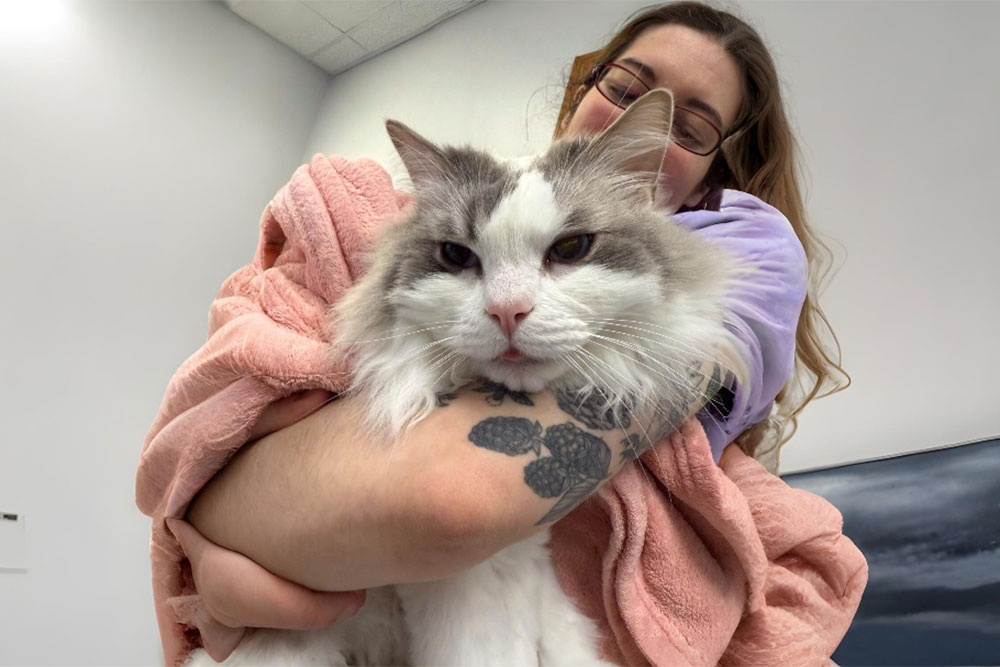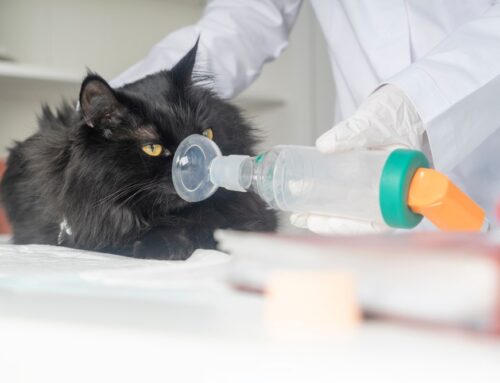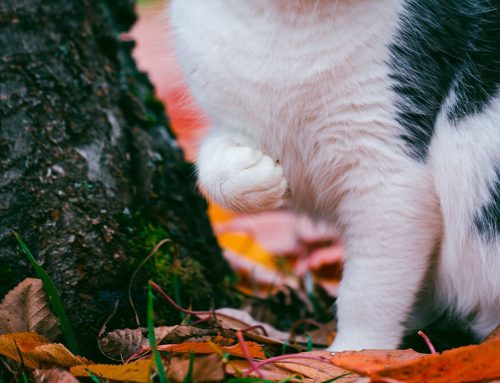A urethral obstruction (urinary blockage) is a common medical emergency seen in felines. It is more common to see in males than females due to their urethral anatomy. When the flow of urine is blocked, dangerous acid base imbalances occur and electrolytes are not expelled from the body (potassium) which can cause cardiac arrhythmias and even death. Fortunately with prompt intervention this can be a very treatable disease process. This involves relieving the obstruction by passing a urinary catheter and immediately treating any electrolyte disturbances. This is typically followed by at least 1-2 days of hospitalization with the catheter in place and the patient will receive intravenous fluid therapy to help continue to support the kidneys, rehydrate the patient, and provide pain control. By doing this, it helps alleviate an immediate re-obstruction as soon as the catheter is removed, but, unfortunately there is still a high recurrence rate of this disease.
Once the catheter can be removed your cat may continue to have signs at home such as frequent trips to the litter box, blood in the urine but this should subside with time and your cat should still be able to pass urine. If you are concerned that they could be re-obstructed you should seek veterinary attention right away. Surgical intervention via a perineal urethrostomy may be considered in cats with repeated episodes of urethral obstruction.
The underlying cause of urethral obstruction is typically secondary to a blanketed term called feline lower urinary tract disease. This encompasses several common causes including crystals in the urine, infection, stones, spasm, and idiopathic cystitis (unknown cause of bladder inflammation). Your veterinarian will typically recommend x-rays to help rule out bladder stones, and a urinalysis to look for signs of crystals or infection. A urine culture may be recommended in some cases based on the initial urinalysis, or, when the catheter is removed given the risks of catheter associated UTI’s. Bloodwork is also recommended to look for the abnormalities discussed previously (elevated kidney values, electrolyte imbalances, etc).
If your cat is exhibiting any of the following signs please consider seeking veterinary attention immediately:
- Vocalizing in the litter box, acting painful when touched
- Making frequent trips to the litter box without production of urine
- Excessive licking/grooming of the hind end
- Exhibiting the above symptoms with vomiting, weakness
If your cat is exhibiting the above signs and does not have a urinary obstruction your veterinarian will typically still want to obtain diagnostics to look for a cause of the urinary signs. Your cat will typically be treated with subcutaneous fluids (fluids given under the skin), pain control, and, although rare in young cats, if there are signs of urinary tract infection, antibiotics may be considered. In this case we would recommend closely monitoring your cat at home as an obstruction can still occur at any time during a flare up of lower urinary tract symptoms.
Feline lower urinary tract disease and subsequent urethral obstructions are complex disease processes. There are some ways to help alleviate symptoms at home, and help prevent dangerous urethral obstructions. Dietary management, increasing water consumption and limiting stressors in your cat’s environment will all be recommended. A prescription diet and increased water consumption alters your cat’s urine composition and dilutes the urine to prevent inflammation and crystal formation.
Environmental stressors may include competition with other cats in the household (multi-cat households should include one litter box per cat + one extra, and enrichment with areas to perch/hide) or changes to the household with new pets, people, types of litter, etc. If these changes are expected and your cat is prone to urinary tract signs, talk with your veterinarian about medical and/or environmental modifications to make prior to these stressful events. The Ohio State University has developed an excellent online resource for pet owners to review for more information : For Cat Owners/Indoor Pet Initiative
Posted by Christina Whitley, DVM, DACVECC – Chief Medical Officer at Animal Urgent Care of Oconomowoc







Leave A Comment